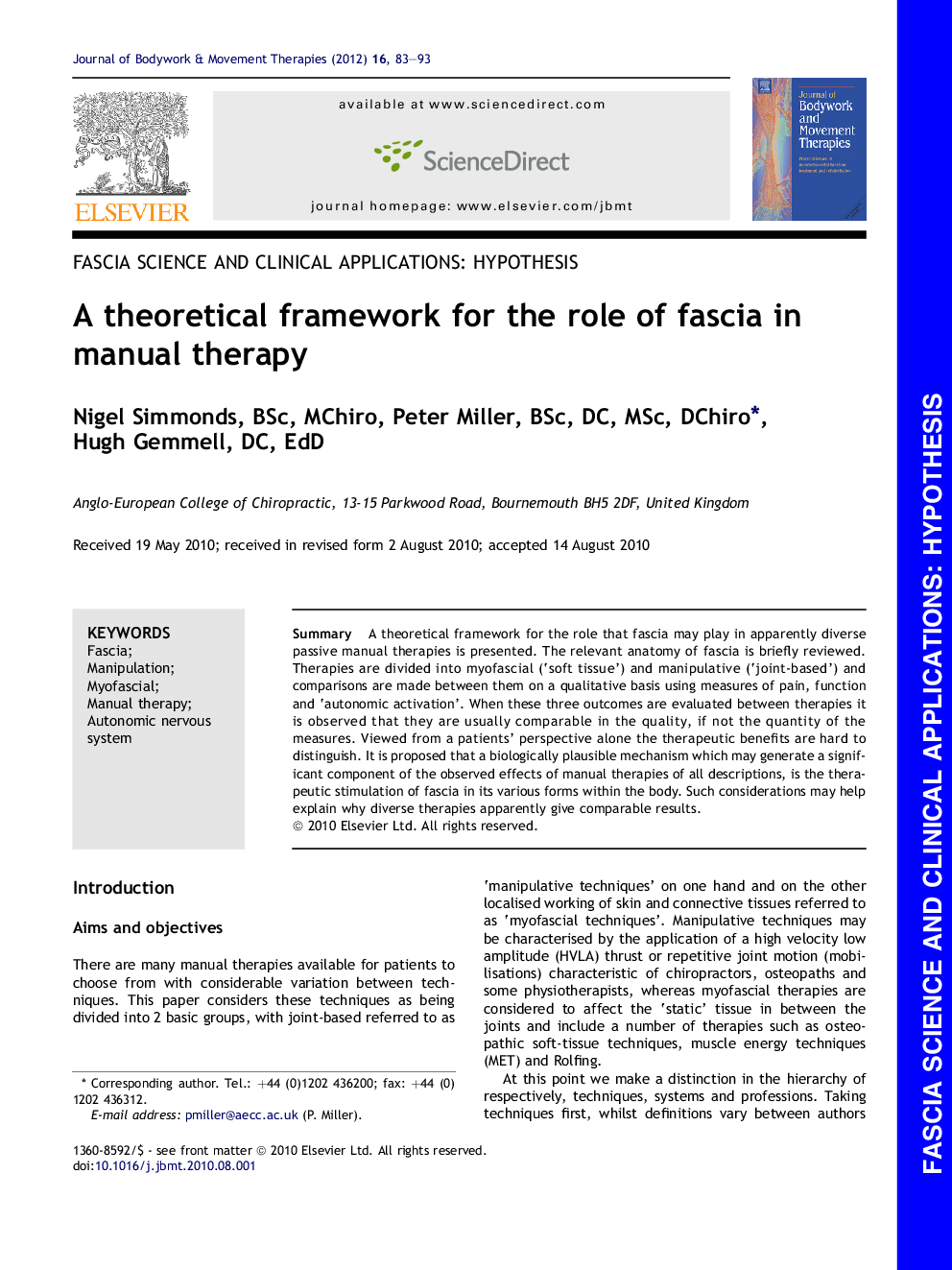| Article ID | Journal | Published Year | Pages | File Type |
|---|---|---|---|---|
| 2619688 | Journal of Bodywork and Movement Therapies | 2012 | 11 Pages |
SummaryA theoretical framework for the role that fascia may play in apparently diverse passive manual therapies is presented. The relevant anatomy of fascia is briefly reviewed. Therapies are divided into myofascial (‘soft tissue’) and manipulative (‘joint-based’) and comparisons are made between them on a qualitative basis using measures of pain, function and ‘autonomic activation’. When these three outcomes are evaluated between therapies it is observed that they are usually comparable in the quality, if not the quantity of the measures. Viewed from a patients’ perspective alone the therapeutic benefits are hard to distinguish. It is proposed that a biologically plausible mechanism which may generate a significant component of the observed effects of manual therapies of all descriptions, is the therapeutic stimulation of fascia in its various forms within the body. Such considerations may help explain why diverse therapies apparently give comparable results.
